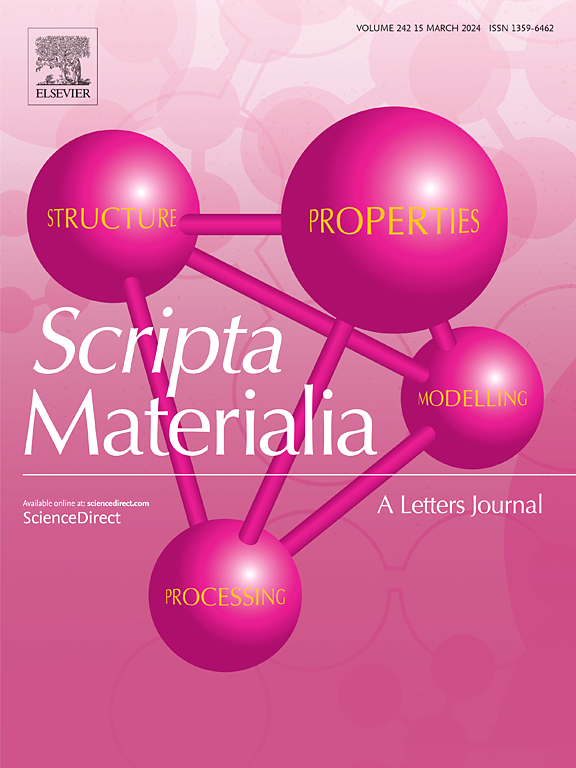Temperature-dependent shear behavior of the β′ phase and its effect on high-temperature mechanical properties in magnesium alloy
IF 5.3
2区 材料科学
Q2 MATERIALS SCIENCE, MULTIDISCIPLINARY
引用次数: 0
Abstract
The unique temperature-dependent shear behavior of the β′ phase in Mg-6Gd-5Y-1Zn-0.3Zr alloy was elucidated and its influence on high-temperature strength was discussed in depth. The β′ phase enhanced strength at room temperature (RT) and 250 °C, but the strength decreased sharply at 300 °C and 350 °C due to the increased susceptibility of β′ phase. At RT, the intrinsic properties of the β′ phase determined its ability to hinder dislocation movement without undergoing shear. At 250 °C, the thermal resistance of the β′ phase decreased, permitting shearing by basal 〈a〉 dislocations but limiting pyramidal 〈c + a〉 dislocation movement. At 300 °C, enhanced atomic mobility allowed basal 〈a〉 and pyramidal 〈c + a〉 dislocations to shear the β′ phase easily, causing rapid strength degradation. At 350 °C, the β′ phase completely dissolved. This study pioneers the exploration of the temperature-dependent shear behavior of the β′ phase, which aids future high-temperature applications of β′ phase-containing alloys.

镁合金β′相的剪切行为及其对高温力学性能的影响
阐明了Mg-6Gd-5Y-1Zn-0.3Zr合金中β′相特有的温度依赖剪切行为,并对其对高温强度的影响进行了深入讨论。在室温和250℃时,β′相增强了材料的强度,但在300℃和350℃时,由于β′相的敏感性增加,材料的强度急剧下降。在室温下,β′相的固有性质决定了它在不发生剪切的情况下阻碍位错运动的能力。在250℃时,β′相的热阻降低,允许基底< a >位错剪切,但限制锥体< C + a >位错运动。在300℃时,增强的原子迁移率使得基底< a >和锥体< C + a >位错容易剪切β′相,导致强度快速下降。在350℃时,β′相完全溶解。该研究为探索β′相的温度依赖剪切行为开辟了先路,这有助于未来含β′相合金的高温应用。
本文章由计算机程序翻译,如有差异,请以英文原文为准。
求助全文
约1分钟内获得全文
求助全文
来源期刊

Scripta Materialia
工程技术-材料科学:综合
CiteScore
11.40
自引率
5.00%
发文量
581
审稿时长
34 days
期刊介绍:
Scripta Materialia is a LETTERS journal of Acta Materialia, providing a forum for the rapid publication of short communications on the relationship between the structure and the properties of inorganic materials. The emphasis is on originality rather than incremental research. Short reports on the development of materials with novel or substantially improved properties are also welcomed. Emphasis is on either the functional or mechanical behavior of metals, ceramics and semiconductors at all length scales.
 求助内容:
求助内容: 应助结果提醒方式:
应助结果提醒方式:


